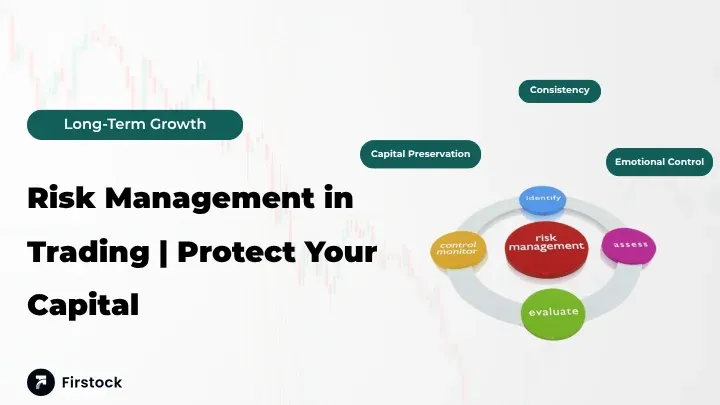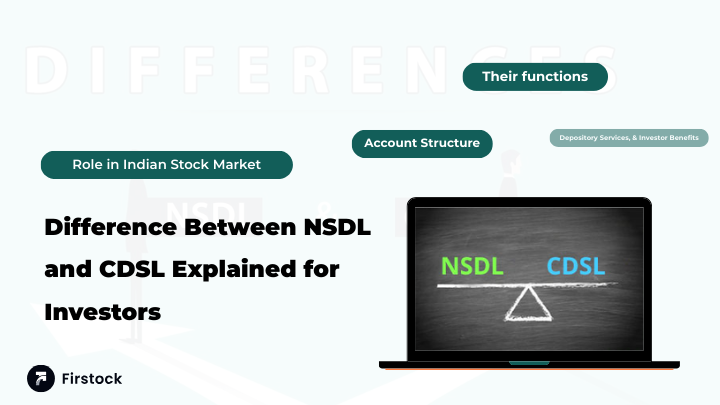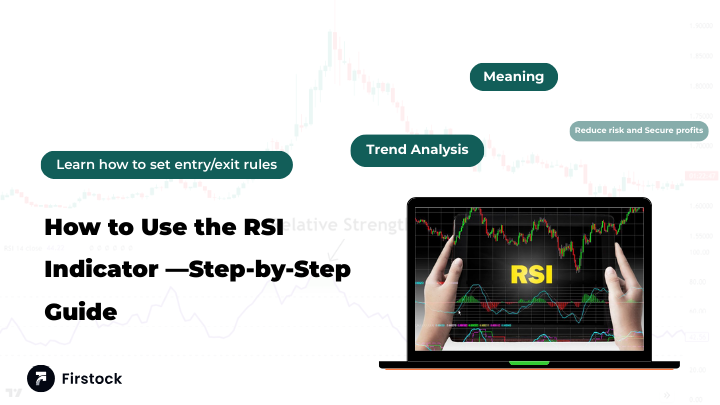Risk Management in Trading | Protect Your Capital

The Art of Protecting Your Capital
If trading were a game, risk management in trading would be your ultimate defense strategy — your invisible shield that keeps you standing while others fall. Many traders focus only on profits, chart patterns, and tips from social media. But the truth is simple: it’s not how much you earn that matters — it’s how much you don’t lose.
In this blog, we’ll explore what risk management in trading really means, why it’s non-negotiable, and how even beginners can build smart, sustainable trading systems around it.
What Is Risk Management in Trading?
Before we dive into complex strategies, let’s start with the basics:
What is risk management in trading?
In simple terms, it’s the process of identifying, assessing, and controlling the potential losses that could occur in your trades.
It’s like putting on a seatbelt before driving — you hope you won’t need it, but you’d be foolish not to wear it.
Risk management helps traders decide:
- How much money to put into each trade
- When to exit if the market moves against them
- How to avoid emotional decisions that lead to heavy losses
Without a solid risk management plan, even the smartest trading strategy can crumble in a single bad trade.
Why Risk Management Is the Heart of Successful Trading
Most new traders think trading success depends solely on finding the “perfect” stock or predicting price movements. But experienced traders will tell you — consistent success lies in how you manage risk, not just how you find opportunities.
Here’s why risk management matters so much:
Think of trading like sailing. The winds (markets) may not always favor you — but with a strong sail (risk plan), you can still navigate through the storm.
Types of Risks in Trading
Before managing risk, you must know what kind of risks exist. Here are the most common ones traders face daily:
1. Market Risk
This is the obvious one — prices move unexpectedly. Stocks drop, indices crash, or currencies swing wildly. Market risk is unavoidable but manageable.
2. Liquidity Risk
You might find yourself unable to sell a stock when you want to — especially in small-cap or penny stocks with low trading volume.
3. Leverage Risk
Leverage can amplify both gains and losses. Borrowing money to trade without a plan is like walking a tightrope without a net.
4. Operational Risk
Errors in trade execution, software glitches, or even internet issues can lead to unexpected losses.
5. Psychological Risk
This is the most underestimated risk — your own emotions. Greed, fear, and impatience have caused more losses than bad charts ever did.
Understanding these helps you build a defense plan tailored to your trading style.
Components of a Good Risk Management Strategy
So, how do you actually put risk management into practice trading in the stock market?
We can’t do without the basics of a well, functioning system.
1. Position Sizing
For a start, work out the amount that you are willing to invest on a single trade. One of the most widely accepted guidelines: don’t risk more than 1, 2% of your total trading capital on a single position.
Example:
In case you have ₹1, 00, 000, the riskiest amount per trade should be ₹1, 000, ₹2, 000.
So, even if you happen to lose money in five trades in a row, you won’t be wiped out.
2. Stop- Loss Orders
A stop- loss order is an automatic sale of your holding at the latest price when the price hits a predetermined level.
It resembles putting a fire alarm in place, one that can save you when the situation is not under control.
3. Risk, to, Reward Ratio
So, before entering a trade, figure out how much you are going to lose in comparison to how much you can gain.
Most traders shoot for 1:2 or even higher ratios, for instance, they risk ₹1, 000 to earn ₹2, 000 or more.
4. Diversification
Avoid putting all your funds into a single company or asset. Spread your investment across different sectors, instruments, or even time frames to lower the risk.
5. Regular Review
Risk management doesn’t imply “set it and forget it”
The situation in the market is always changing, volatility is varying, and your capital is growing. Check your plan every month and make the necessary changes.
The Role of Psychology in Risk Management
You can have the best stop-loss levels and strategies — but if you can’t control your emotions, risk management falls apart.
Trading psychology plays a huge role in how you handle risk. Here’s what usually goes wrong:
- Greed: Holding a losing trade, hoping it’ll turn around.
- Fear: Exiting too early and missing profits.
- Overconfidence: Increasing trade size after a winning streak.
- Revenge Trading: Trying to “win back” after a loss.
To master financial risk management, you must treat trading like a business, not a casino. A good trader is calm, patient, and process-driven — not emotionally reactive.
Tools & Techniques for Risk Management in Trading
Modern trading platforms and analytical tools make it easier than ever to manage risk smartly. Here are some popular ones:
1. Stop-Loss & Take-Profit Tools
Almost every trading platform offers automated stop-loss and target settings. Use them!
2. Volatility Indicators
Before taking a trade, use tools such as ATR (Average True Range) or Bollinger Bands to measure the market volatility.
3. Portfolio Trackers
Applications and dashboards make it easier for you to monitor your holdings in various stocks and sectors.
4. Position Sizing Calculators
You can utilize online resources to provide your account balance, risk percentage, and stop, loss level for instant position size calculation.
Such tools make your trading decisions into strategic actions rather than emotional reactions.
Real-Life Example: The Tale of Two Traders
Let’s look at a simple story.
Trader A and Trader B both start with ₹1,00,000. Both pick the same stocks, same entries, and same targets.
But here’s the difference:
- Trader A risks ₹10,000 per trade with no stop-loss.
- Trader B risks only ₹2,000 with strict stop-losses.
After five losing trades:
- Trader A loses ₹50,000 — half his capital gone.
- Trader B loses only ₹10,000 and still has ₹90,000 to trade again.
Who do you think lasts longer in the market?
That’s the power of risk management in stock market trading — it’s not glamorous, but it’s what separates survivors from quitters.
Financial Risk Management Beyond Trading
While we’re focused on trading, financial risk management extends to investing, business decisions, and even personal finance.
For example:
- Diversifying your investment portfolio is risk management.
- Keeping an emergency fund is risk management.
- Buying health insurance is risk management.
The principle is the same everywhere — protect your downside so your upside can grow freely.
Common Mistakes Traders Make
Even after knowing the theory, many traders fall into these traps:
- Ignoring stop-losses — Hoping a losing trade will bounce back.
- Risking too much capital — Going “all in” on one trade.
- Not journaling trades — Failing to learn from mistakes.
- Chasing losses — Making impulsive revenge trades.
- Overtrading — Taking too many positions without strategy.
Each mistake chips away at your capital and confidence. Smart traders learn to trade less but trade better.
Pro Tips for Better Risk Management in Trading
Here are some habits that can elevate your trading discipline:
- Set daily and weekly loss limits — Once hit, stop trading.
- Use checklists before entering any trade.
- Take breaks after big wins or losses to reset emotionally.
- Track your win/loss ratio — aim for consistency, not perfection.
- Review every trade weekly to find recurring mistakes.
Remember: your biggest edge in trading isn’t predicting markets — it’s managing yourself.
Wrapping Up: Trading Smart, Not Fearful
Fundamentally, risk management in trading is not about calling off all kinds of risks, rather it is about exercising them responsibly.
Markets will always be unpredictable. Yet with discipline, planning, and self, control, you can come out on top even during turbulent times.
Next time you enter a position, don’t simply ask, “What is the maximum return I can get?”
Instead enquire, “What is the maximum loss I can afford and still be able to trade tomorrow?”
That is the thinking of a winning trader.
Because in trading, the best tactics to the contrary of an aggressive attack are your defense, and risk management is your most powerful armor.
FAQs
1. What is risk management in trading?
Identifying, analyzing, and reducing the possibility of losing money when trading in the financial markets is known as risk management. It allows traders to keep their money safe and trade without hesitation.
2. Why is risk management important?
As losses will happen at some point, managing them will allow them to be of such a size that you can bounce back and continue trading.
3. How much should I risk per trade?
Typically, traders risk 1, 2% of their total capital per trade. This helps to keep the potential loss at a reasonable level.
4. Can I trade without a stop, loss?
Technically yes, but it is not advisable. One of the main functions of stop, losses is to avoid that the decisions are made emotionally and consequently lead to huge losses.
5. Is risk management only for professional traders?
Not really. Every trader, newbie or pro, needs risk management. Without it, it’s impossible to last in the markets.





